Luigi Ontani (Vergato, 1943) is a painter, sculptor and photographer among the greatest of Italian art of the second half of the twentieth century. Ontani has always had an approach in his art that is completely free from any convention or limitation. In fact, he masters different techniques and over the years he also learns how to work with different materials, convinced that art should be a moment of play and leisure and therefore should not take itself very seriously.
Based on this concept, Ontani usually uses very bright colors, as a reminder of play and childhood, and he becomes the protagonist of his works by disguising himself, often even as illustrious characters from mythology or literature, famous in fact his personifications of Dante, Pinocchio, Leda and the swan and many others, creating “tableux vivants.” Ontani also proves over time to be interested in the concepts of pattern and gestural repetition, which he investigates in some videos made with amateur cameras. Moreover, he goes beyond the ’happening, which ends the moment the performance ends, therefore he prefers photography, which crystallizes his artistic gesture in time.
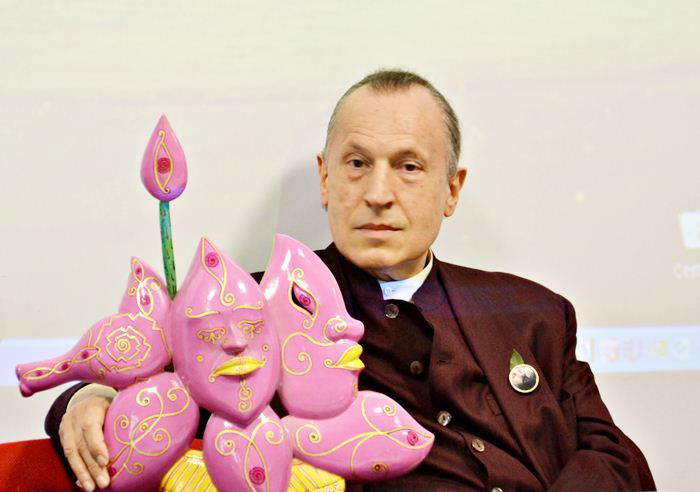
Luigi Ontani was born on Nov. 24, 1943, in Vergato, a small town near Bologna, during World War II, and recounted experiencing displacement from his birthplace as a child. In the 1960s he moved to Turin to do his military service. Once in the city, in his free time he began to frequent the most avant-garde contemporary art museums and galleries, such as the Il Punto gallery, meeting gallerists and emerging artists of the caliber of Carla Accardi, Mario Merz and Gruppo Zero.
In the meantime, Ontani began to take an interest in contemporary literature, particularly the poems of Guillaume Apollinaire and the writings of Luigi Pirandello, which fascinated him because of their sense of adventure, their appeal to the exotic, and the elements of transgression that were compatible with his inclinations and, above all, with his personal artistic intent. With the Turin interlude over, Ontani returned to Vergato in 1965, painting with different techniques that he studied first as a self-taught artist and then attending a free course in nude painting at the Academy of Fine Arts in Bologna. It was in Bologna that he held his first solo exhibition, in 1967 at Galleria San Petronio. In 1970 he moved to Rome and the capital’s lively cultural environment led him to further expand his experimentation.
He was invited to participate in the Venice Biennale for the first time in 1972, where he would return to exhibit several times, until 2003. He obtained several major international awards and in 1977 exhibited his works in New York at the Sonnabend Gallery. He would later participate in several exhibitions in Paris, London, Brussels, Zurich, Munich, Antwerp, Belgrade and again in the United States. Meanwhile, Ontani’s fascination with the exotic and the Orient culminates with his first trip to India, during which he meets and forges established relationships with a number of photographers. He continued his explorations as far as Indonesia, becoming enchanted by the island of Bali and returning from this experience with several elements of inspiration for his art, such as masks.
As he continues to travel between East and West, by the 1990s Ontani is now internationally considered one of the most important Italian artists. He continues to exhibit his works in major museums around the World, such as the Guggenheim Museum in New York, the Centre Pompidou in Paris, and the Reina Sofia in Madrid, as well as participating in numerous biennials, not only in Venice but also in Sydney and Lyon.
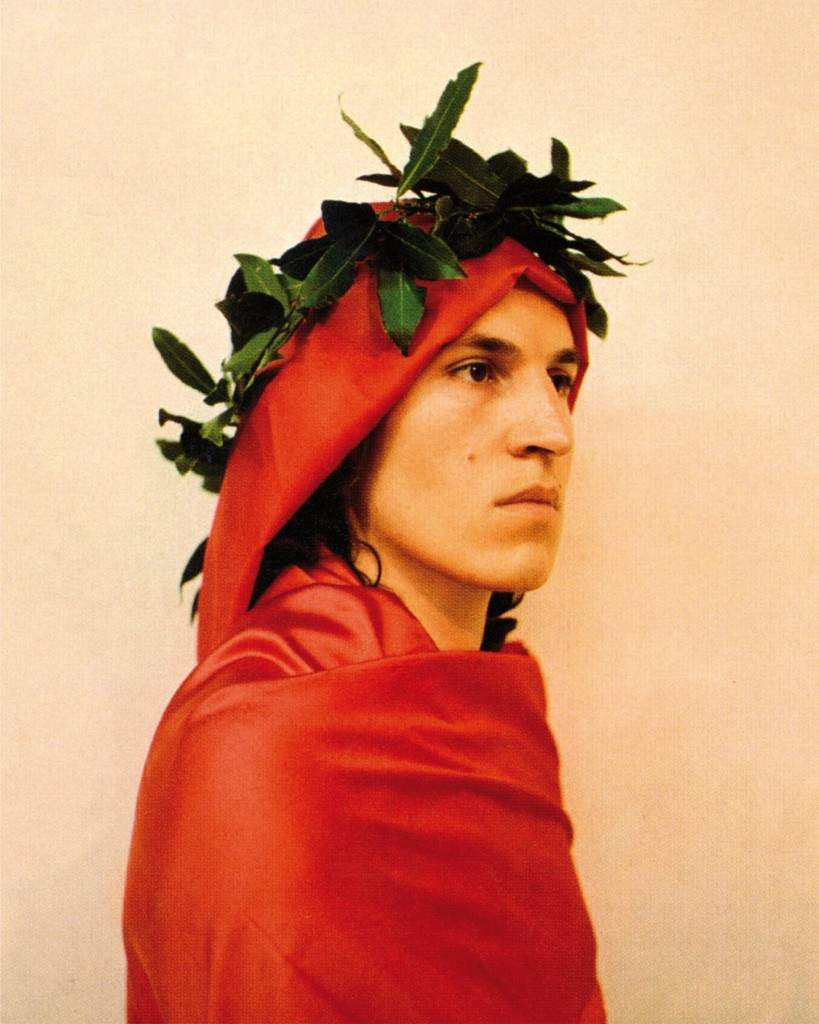
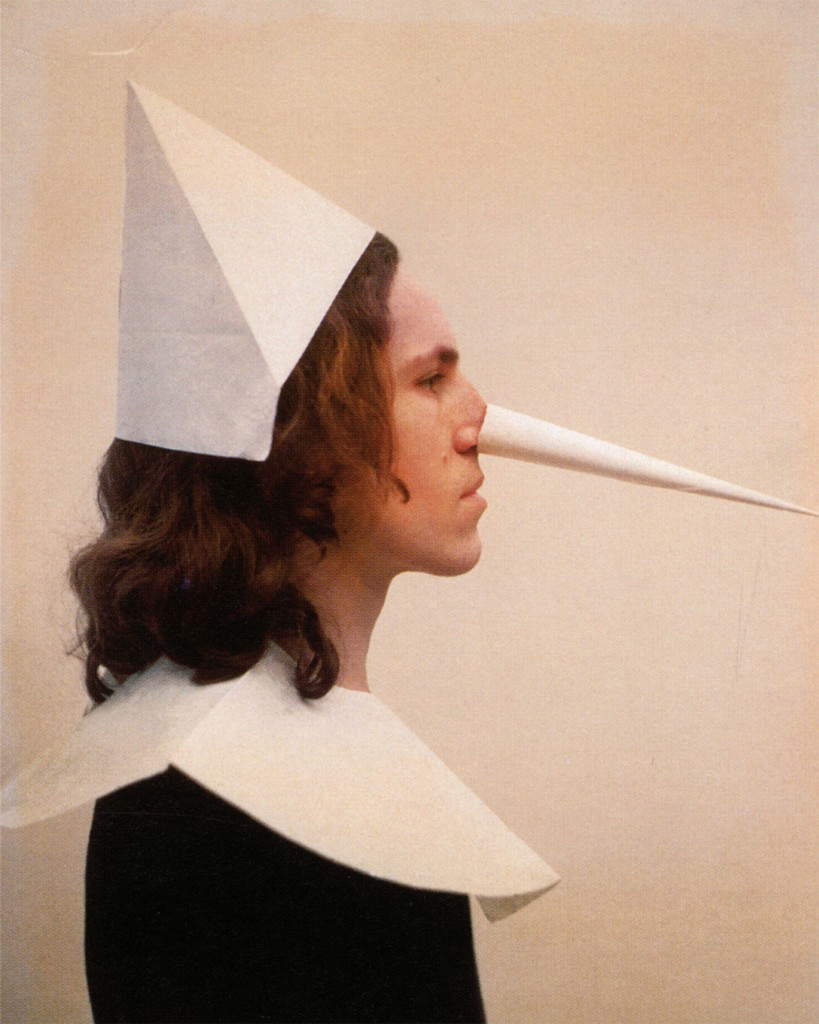
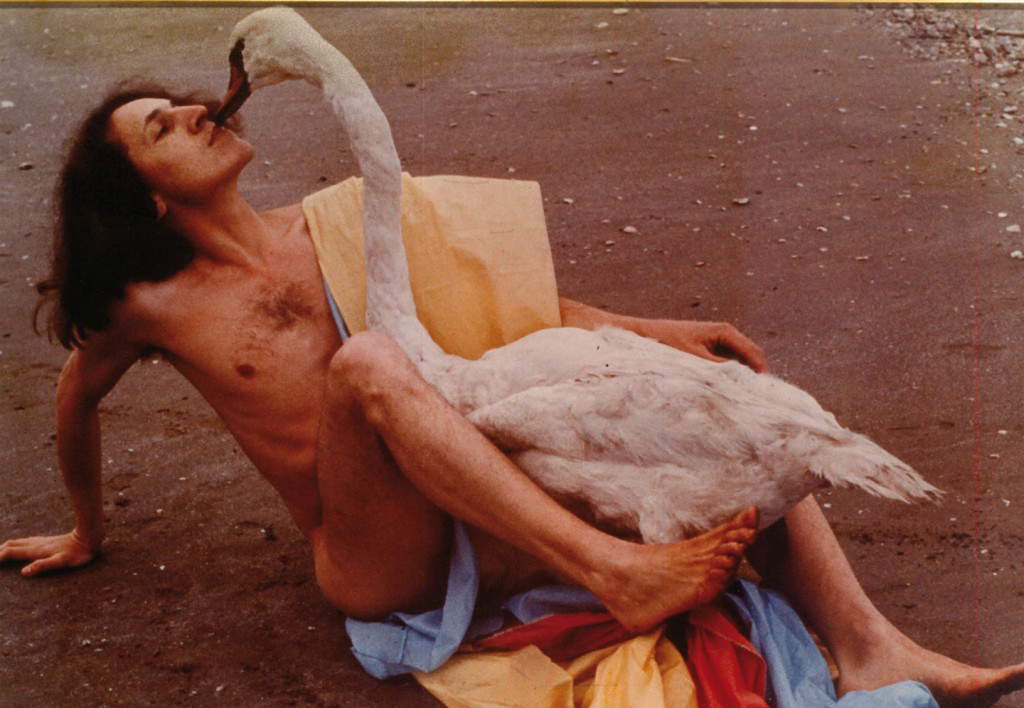
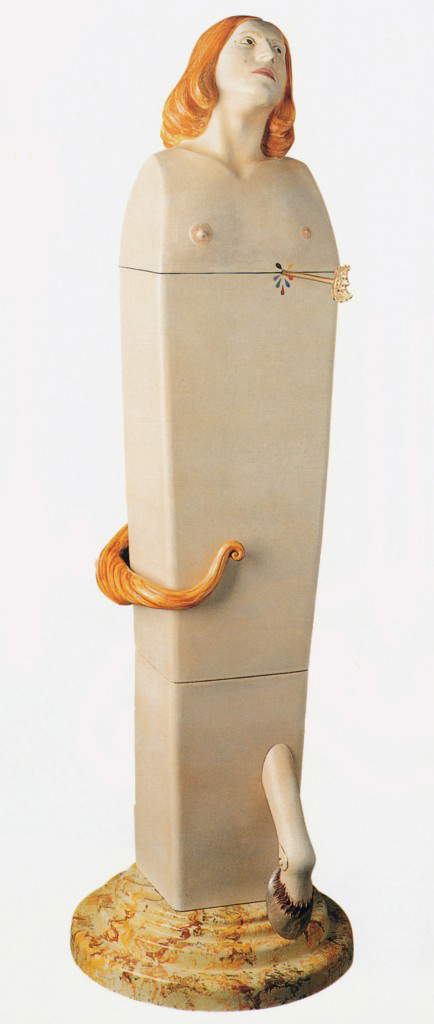
Luigi Ontani is a peculiar artist who has always preferred to move in nonconformist terrain. Since his early days, he has carried out reasoning and research on certain ideological contrasts typical of the 20th century, namely the combination of the sacred and the profane, mythology and fable, and Eastern and Western culture. Basically, Ontani believes that art is always a moment of fun and evasion from the ordinary, so his approach is often playful and above all free from any convention. In fact, he uses a variety of techniques, prefers objects and images that are often meaningless, and directly becomes an artistic medium by having himself photographed wearing masks or impersonating characters, thus crossing the boundary between art and artist.
In the 1960s he began making his first works, a kind of “ready-made” made from materials found in the Maccaferri factory where he worked. He took a car starter pedal and attached a celestial lamp to it via an electric wire, baptizing the work with the name Pedal Guardian Angel . He exhibited this early work at the Palazzo dei Diamanti in Ferrara, and later at Luciano Inga Pin’s gallery in Milan. He then made another very similar ready-made using colored light bulbs as if they were the Italian tricolor.
Following this, in 1965, he began producing what he called “Pleonastic Objects,” so called precisely because as the name suggests they are superfluous objects that have no specific use. These were casts of everyday objects made from scagliola, a particular type of plaster usually used in construction. The casts, once dry, were then painted with very brightly colored temperas reminiscent of the world of childhood, and Ontani used them as if they were talismans, often wearing them on his body or hanging them on trees. With these objects, Ontani wanted to give a vision of sculpture that should not take itself seriously, far from both the solemnity of large statues and design, in a deliberately amateurish form.
As mentioned in the biography Ontani freely mastered different materials and techniques; in fact, also in the 1960s he made sculptures out of corrugated cardboard and foam rubber that he hung in suspension in a room called the “Room of Similes.” In addition, he often tried his hand at photography, fascinated by the possibility given by this technique to crystallize in time the gesture made by the artist, going beyond the elusiveness of the happenings put in place by many of his contemporary artists.
Ontani’s photographs have some elements in common, in that the protagonist is always the artist himself, who steps into the shoes of great historical, mythological or literary figures. Moreover, there are two preferred formats, namely the miniature or the gigantograph. A famous gigantography photograph is Leda and the Swan (1975), in whichandrogyny, another of the artist’s favorite themes, is exalted. In this scene, Ontani himself plays Leda, the mythological character who joined Zeus transformed into a swan, while kissing the beak of a real swan and wearing drapes of three colors: pink (representing feminine) blue (representing masculine) and yellow (representing androgyny).One of Ontani’s earliest photographic works was Ange Infidèle (1969), which turns out to be the first of his famous "tableux vivants," in which he himself is the protagonist, to enhance the concept of narcissism. These tableux vivants, 30 in all, consisted of recreating a given scene with costumed actors who remain in the predetermined pose without ever moving or speaking, as if they were part of a painting. They founded their nature precisely on the concept of immobility, “as if they were apparitions” in the artist’s own words, always present in the first person as various famous characters, including Pinocchio, Dante, Saint Sebastian, and Bacchus.
By the late 1960s, however, the artist had already explored the video format, using cameras of the “Super 8 millimeter” model to film himself in the act of performing repeated gestures, approaching this technique with an interest focused on ritual and the mechanicity of patterns. In the 1970s, travels to Indonesia led him to cultivate a fascination with and reasoning about the mask, which from an object to be worn on oneself became a means of representing travel and different ethnic groups. He also devoted himself during these years to what he called “hybrids,” a synthesis of the expression “hybridization of idols,” which is the tracing of some existing sculptures with materials different from the original. He made some in papier-mâché, ceramics, wood, glass and mixed media. His production meanwhile, with the arrival of the 1980s, veers more and more toward a dreamlike and surreal dimension, coupled with a sincere interest in craftsmanship. In fact, some paintings with very slender figures drawn from mythology date from this period. It is interesting to point out that Ontani continued to approach new manual techniques in these years as well, allowing him to make different variations on recurring themes and subjects.
The works of the 1990s are especially concerned with porcelain; in fact, in this period he began a fruitful collaboration with Davide Servadei’s Bottega Gatti in Faenza, which led to the so-called ErmEstEtiche, a series of statues in painted ceramic and pure gold. Among them are SanSebastianSagittariO , which takes up the character of St. Sebastian, already impersonated by Ontani several times, who becomes a symbol of the artistic vocation, for which the religious martyr has sacrificed for his faith, and in the same way art does for the ideal, and Sganontano, who represents Sganapinio, the typical carnival mask of Bologna created in 1877 by puppeteer and dialect actor Augusto Galli. The character’s name comes from the dialect expression “sganappar,” which indicates the action of quickly eating a large amount of food, but in this case Ontani inserts several references to singer-songwriter Lucio Dalla into the statue: there is a halo behind the head, which is actually a gold disc; the hair is reminiscent of a wine flask, found in the taverns Dalla used to frequent; a leg is transformed into a wolf’s paw, a clear reference to the hit song Attenti al lupo; finally, there are several symbols of Bologna such as the tortellini that replace the buttons on the jacket and the sock with the red and blue colors of the city’s coat of arms.
Ontani’s most recent works include the stained glass windows of the Palazzo dei Capitani della Montagna in Vergato, created in 1998, in which he depicts the ages of man, the seasons and the elements, and a large statue entitled NapoLeonCentAurOntano (c. 2003). The statue, made of ceramic and weighing about six quintals, depicts the French statesman in a half-man, half-horse version, while resting on a base that echoes the shape of Elba Island. Finally, Ontani’s latest experimentation involves mosaics, for which he collaborated with mosaicist Costantino Buccolieri for a panel placed in the Materdei Station of the Naples Metro.
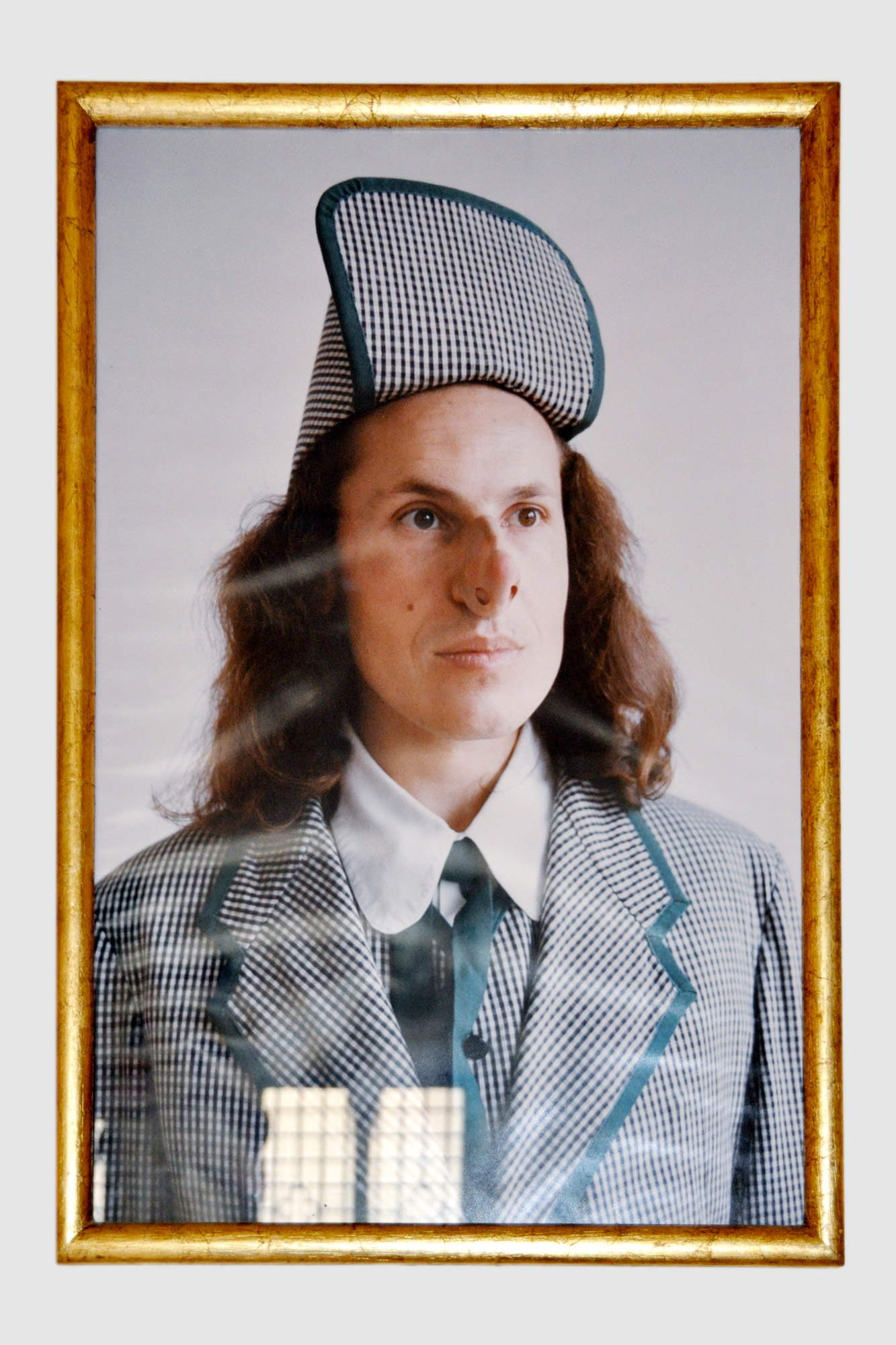
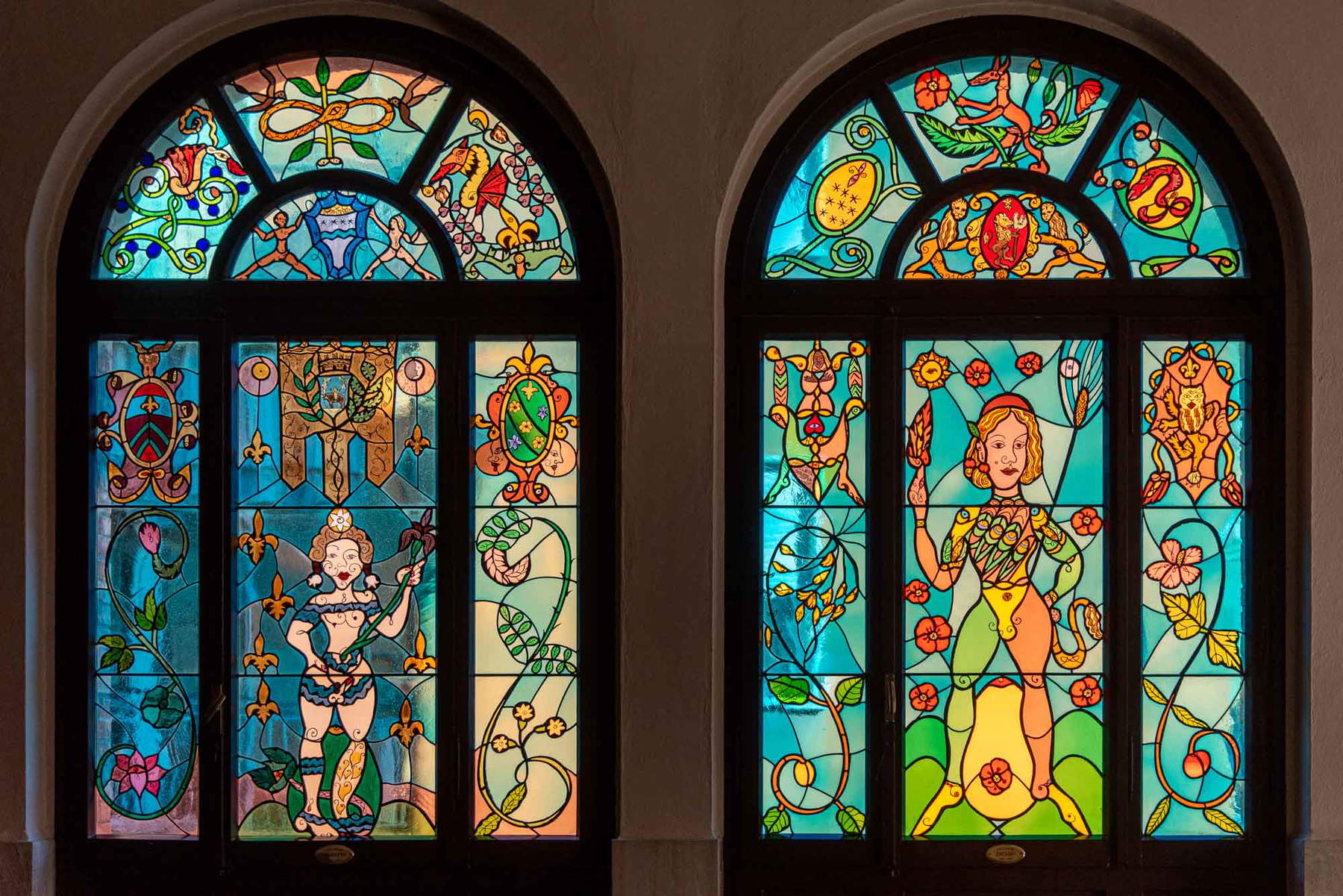
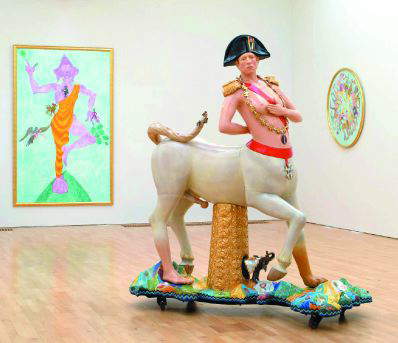
The town hall of Vergato, the town where Ontani was born, houses the “Ontani Museum,” made up of various works donated by the artist himself. Here it is possible to admire the ErmEstEtics, several photographs of the Tableuax Vivants, some statues including AlnusThaiAurea Siam, “the alder tree with masks,” placed right in the center of the room; and an ink and watercolor work entitled GaneshDafne gaio, Giove et Ganimede, Gallo e Alloro col gorilla goloso dell’uovo d’oro.
In the council chamber of the municipality of Vergato, on the floor above the “Ontani Museum,” the stained glass windows with the ages of man, seasons and elements made in 1998, mentioned above, can also be visited.
Other works by Ontani are housed in the MART - Museum of Modern and Contemporary Art of Trento and Rovereto, namely the photograph Three Gladioli d’Adone temptation (1972), the paintings Pteros Temple (1985) and Angeliko man Kauffmann café (1980-86) and the sculpture Arlemarlecchino (1991-94).
 |
| Luigi Ontani, Art as play and fun. Life, works, style |
Warning: the translation into English of the original Italian article was created using automatic tools. We undertake to review all articles, but we do not guarantee the total absence of inaccuracies in the translation due to the program. You can find the original by clicking on the ITA button. If you find any mistake,please contact us.